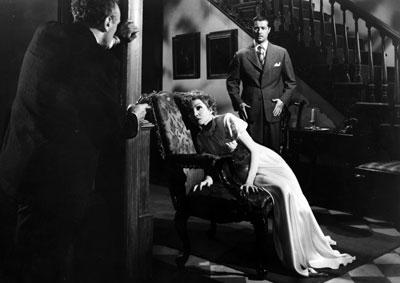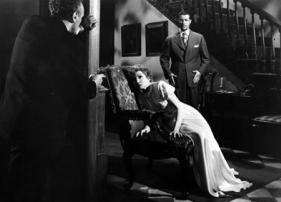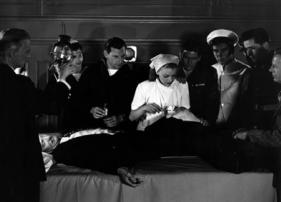Directed by Douglas Sirk
Triangle Productions, Inc./United Artists Corp. Producers: Mary Pickford, Charles “Buddy” Rogers, Ralph Cohn. Screenwriter: St. Clair McKelway. Cinematographer: Joseph Valentine. Editor: Lynn Harrison. With: Claudette Colbert, Robert Cummings, Don Ameche, Rita Johnson, George Coulouris. 35mm, b/w, 96 min.
Although his critical and box office successes and subsequent reputation as an auteur wouldn’t materialize until much later in his career, director Douglas Sirk’s early Hollywood career contained some interesting efforts in Summer Storm (1944), A Scandal in Paris (1946), Lured (1947) and Sleep, My Love. Lacking the successful box-office and emotional impact of Rebecca, Suspicion or Gaslight, Sleep, My Love still remains a surprisingly effective terrorized-wife dram
The film was produced by “America’s Sweetheart” Mary Pickford (with husband Charles ‘Buddy’ Rogers) after a twelve-year absence from filmmaking. With a story by Leo Rosten (who also co-wrote the screenplay), the plot centers around a socialite, played by the earnest and lovely Claudette Colbert, who is being driven mad by her faithless husband, an ostensibly miscast and subdued Don Ameche playing against type. In spite of some of the formulaic melodramatic focus of the story, Colbert is enchantingly convincing as the heroine; this highlight is particularly evident in her scenes with the delightfully genuine Robert Cummings. The loving attention paid to the actress was pointed out in later interviews with Sirk when he dismissed the film, stating “the only thing I was interested in was the Claudette Colbert part.” The effectively atmospheric and noir-like cinematography of Joseph Valentine is another respectable highlight to the film. Valentine would go on to win the Oscar for his work on Victor Fleming’s Joan of Arc the next year.
Archived production communications with the Hays Office throughout the making of the film mostly addressed any potential sexual references between the married Colbert character and her new male friend, as well as the costuming for the deliciously sultry character Daphne, played by Hazel Brooks. In the end, the main concern for the regulators was the film’s representation of an “unnamed strange powder” that plays a major plot element. (Representation of illicit drug use seemed to be a new hot topic of code concern in post-World War II filmmaking).
Todd Wiener
Preserved in cooperation with Paramount Pictures from the original 35mm nitrate picture and track negatives and a 35mm nitrate composite master positive. Laboratory services by The Stanford Theatre Film Laboratory, Audio Mechanics, DJ Audio, Film Technology Company, Inc. Special thanks to: Barry Allen, Andrea Kalas, Laura Thornburg.






 Mobile Navigation
Mobile Navigation



